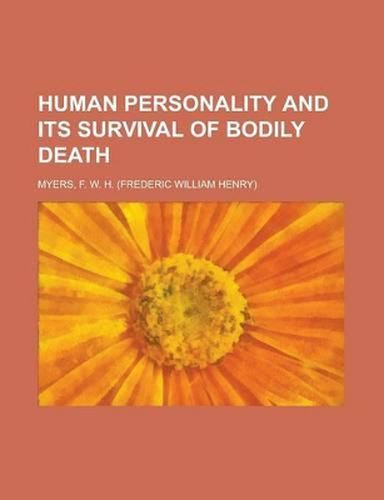Readings Newsletter
Become a Readings Member to make your shopping experience even easier.
Sign in or sign up for free!
You’re not far away from qualifying for FREE standard shipping within Australia
You’ve qualified for FREE standard shipping within Australia
The cart is loading…






Excerpt: …rapport between mind and mind, but in a haunted house we have a rapport complicated by its apparent dependence on locality. It seems necessary to make the improbable assumption, that the spirit is interested in an entirely special way in a particular house (though 249 possibly this interest may be of a subconscious kind), and that his interest in it puts him into connection with another mind, occupied with it in the way that that of a living person actually there must consciously or unconsciously be, while he does not get into similar communication with the same, or with other persons elsewhere. If, notwithstanding these difficulties, it be true that haunting is due in any way to the agency of deceased persons, and conveys a definite idea of them to the percipients through the resemblance to them of the apparition, then, by patiently continuing our investigations, we may expect, sooner or later, to obtain a sufficient amount of evidence to connect clearly the commencement of hauntings with the death of particular persons, and to establish clearly the likeness of the apparition to those persons. The fact that almost everybody is now photographed ought to be of material assistance in obtaining evidence of this latter kind. My third theory dispenses with the agency of disembodied spirits, but involves us in other and perhaps equally great improbabilities. It is that the first appearance is a purely subjective hallucination, and that the subsequent similar appearances, both to the original percipient and to others, are the result of the first appearance; unconscious expectancy causing them in the case of the original percipient, and some sort of telepathic communication from the original percipient in the case of others. In fact, it assumes that a tendency to a particular hallucination is in a way infectious. If this theory be true, I should expect to find that the apparently independent appearances after the first depended on the percipient’s having…
$9.00 standard shipping within Australia
FREE standard shipping within Australia for orders over $100.00
Express & International shipping calculated at checkout
Excerpt: …rapport between mind and mind, but in a haunted house we have a rapport complicated by its apparent dependence on locality. It seems necessary to make the improbable assumption, that the spirit is interested in an entirely special way in a particular house (though 249 possibly this interest may be of a subconscious kind), and that his interest in it puts him into connection with another mind, occupied with it in the way that that of a living person actually there must consciously or unconsciously be, while he does not get into similar communication with the same, or with other persons elsewhere. If, notwithstanding these difficulties, it be true that haunting is due in any way to the agency of deceased persons, and conveys a definite idea of them to the percipients through the resemblance to them of the apparition, then, by patiently continuing our investigations, we may expect, sooner or later, to obtain a sufficient amount of evidence to connect clearly the commencement of hauntings with the death of particular persons, and to establish clearly the likeness of the apparition to those persons. The fact that almost everybody is now photographed ought to be of material assistance in obtaining evidence of this latter kind. My third theory dispenses with the agency of disembodied spirits, but involves us in other and perhaps equally great improbabilities. It is that the first appearance is a purely subjective hallucination, and that the subsequent similar appearances, both to the original percipient and to others, are the result of the first appearance; unconscious expectancy causing them in the case of the original percipient, and some sort of telepathic communication from the original percipient in the case of others. In fact, it assumes that a tendency to a particular hallucination is in a way infectious. If this theory be true, I should expect to find that the apparently independent appearances after the first depended on the percipient’s having…